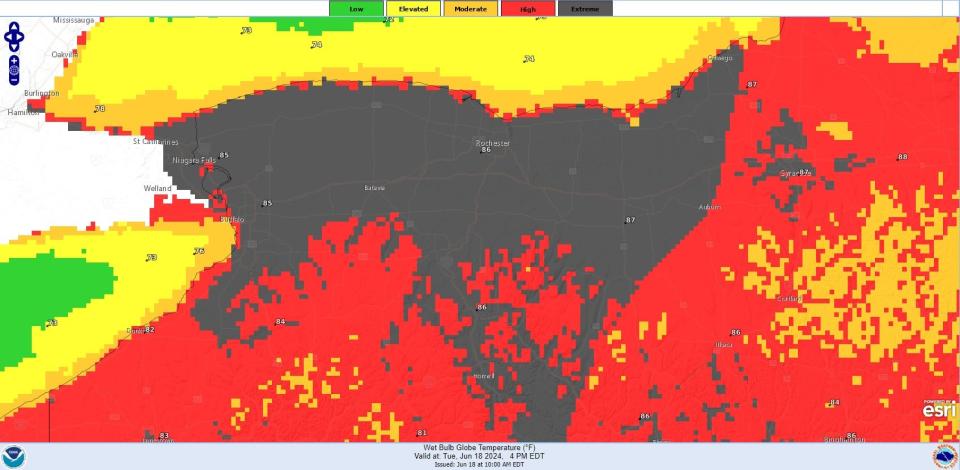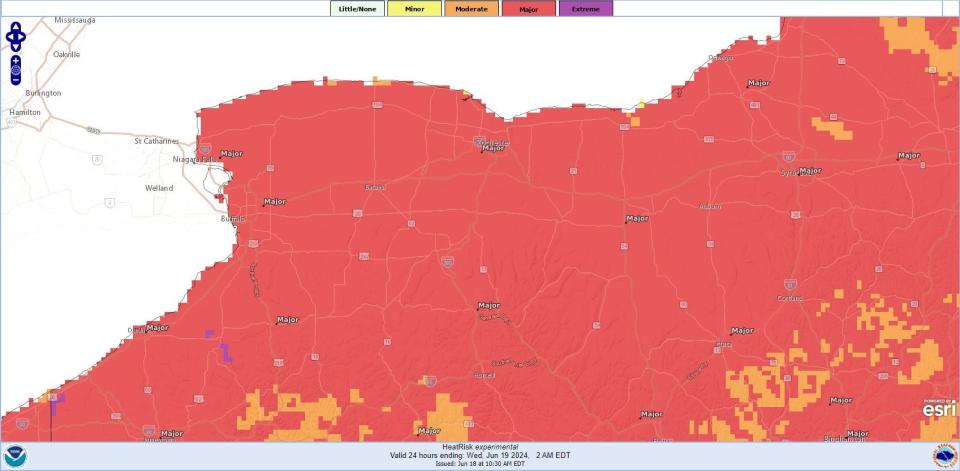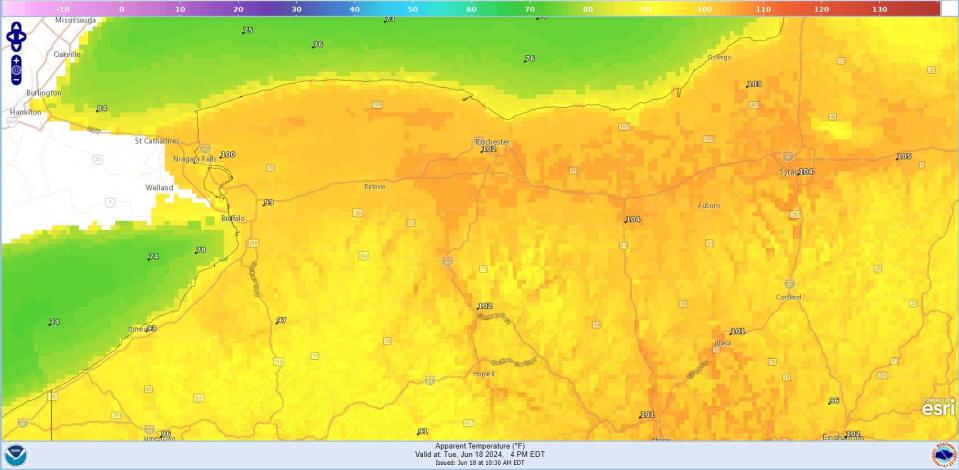What is wet-bulb temperature? Measuring a summer heat wave
When the area is blanketed by stifling heat, the discussion often swirls around different ways to measure exactly how extreme those conditions are. Wet-bulb globe temperature is a key factor. Beyond air temperature and heat index, the increasingly popular measurement of the wet-bulb globe temperature takes into account more factors than how high the mercury is.
How is wet bulb temperature calculated?
It factors in temperature, relative humidity, wind, cloud cover and cloud angle to get a realistic impression of the heat stress under direct sunlight, according to the National Weather Service. While the heat index factors in humidity, it’s calculated in shady areas.
Including the impact of the sun into the equation is one reason wet-bulb globe temperature is used by military agencies and the Occupational Safety and Health Association to manage workload.
Heat index is the more common measure, thanks to the National Weather Service. However, heat index takes into account only air temperature and dewpoint.
Wet bulb globe temperature (WBGT) is a weighted temperature that takes into account not just the ambient air temperature but also air movement, humidity and radiant heat exchange, giving a measure of heat stress in the exact conditions.
It also is more accurate because using a wet bulb globe thermometer, athletic trainers can tell the exact WBGT of the location of the field where a team is practicing.
It’s different from a heat index or even humidity in that it considers more factors to provide a more accurate reading.
Organizations and entities that endorse the use of WBGT include the NCAA, the NFL, the Department of Defense as well as the American College of Sports Medicine and the American Academy of Pediatrics.
How is wet-bulb globe temperature measured?
While the Weather Service still considers wet-bulb globe temperature to be an experimental research tool, it does provide forecasts up to seven days in advance.
Devices used to measure the wet-bulb temperature include a dry-bulb thermometer, wet-bulb thermometer and globe thermometer. The wet bulb thermometer is a thermometer covered in a wet cloth, using evaporation to simulate how the human body regulates heat. The black globe measures solar radiation and the dry bulb calculates the air temperature in the shade.
More: Will Rochester schools be closed due to heat wave? Here's what we know
Who should use wet-bulb globe temperature?

The Weather Service recommends the wet-bulb temperature for anyone doing prolonged physical activity outside, whether that’s athletes, outdoor workers, or event organizers. Those groups are most likely to experience direct sunlight, evaporative cooling and other aspects which are measured closely by wet-bulb globe temperature.
When is the wet bulb temperature considered unsafe?
OSHA has guidelines around when to be concerned about outdoor workers’ safety based on wet-bulb globe thermometer temperature. The guidelines also differentiate between workers acclimated to heat and those who have not.
The agency also factors in any protective equipment or clothing that might be necessary, but impair heat dissipation. For unacclimatized workers, a wet-bulb globe temperature greater than 70 degrees could be unsafe for strenuous work, while greater than 77 degrees can represent a high risk of heat-related illness.
The wet-bulb temperature for Rochester at 4 p.m. on June 18 is forecast to be 86 degrees, considered extreme by the National Weather Service.
OSHA recommends outdoor workers be acclimated to conditions in their first day working in heat, have shade at outdoor work sites, schedule work earlier or later in the day, provide rest as part of the schedule, and limit strenuous work.
Rochester NY weather forecast: How hot will it get?

It’s going to be hot in Rochester, with a daily high near 94 degrees. The hottest part of the day is expected in the late afternoon, around 4 p.m.
While that’s going to approach the record high of 97 degrees, set in 1997, how else can this heat be analyzed? Here are charts from the Weather Service looking at HeatRisk, wet-bulb globe temperature and apparent temperature, also known as heat index.
HeatRisk is a new tool for measuring the health implications of heat from the Centers for Disease Control and Weather Service. The tool brings together a few different measurements to illustrate the overall health risk from heat on any given day, including temperature, overnight lows and air quality. The scale goes from little to no risk of heat-related illnesses to extreme. Tuesday’s forecast calls for the second-highest risk rating of major, which indicates the heat can impact everyone and to spend at least a few hours in a cool place to lower your risk for health impacts from heat.

The wet-bulb globe temperature for June 18 peaks at 86 degrees, considered to be extreme. The measure for the wet-bulb temperature will always be lower than the air temperature, unless there’s 100% humidity, but it illustrates the type of stress it puts on a human body under exertion in direct sunlight.
The apparent temperature, or heat index, for June 18 peaks at 102 degrees, which is a measure of how hot it feels and a greater threat of heat-related illness. It factors in air temperature and relative humidity, but is measured in the shade. Heat indices exceeding 103 degrees can lead to dangerous heat disorders with prolonged exposure or exertion, according to the Weather Service.
— Steve Howe covers weather, climate and lake issues for the Democrat and Chronicle and his least favorite part of summer is mosquito bites. Have any insight into Rochester weather? Share with him at showe@gannett.com.
This article originally appeared on Rochester Democrat and Chronicle: What is wet-bulb temperature? Measuring a summer heat wave

